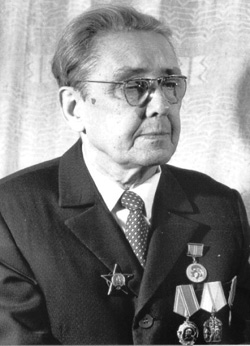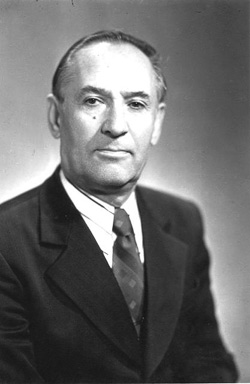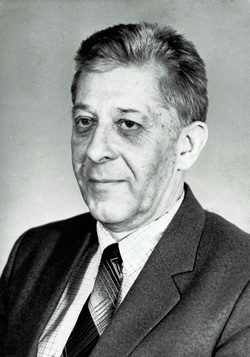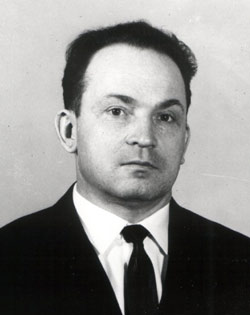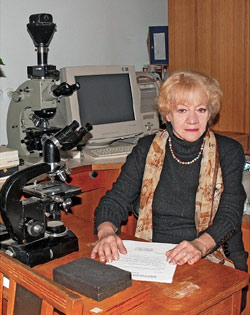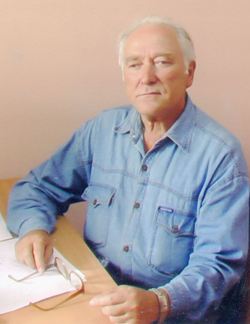 |
 |
||||||
|
Department of Evolutionary MorphologyThe History of the DepartmentComparative anatomical studies have been conducted in the Academy of Sciences of Ukraine since 1922. They were initiated at the Chair of Experimental Zoology and at the Omelchenko Biological Institute. Since 1930 this studies have been conducted at the Departments of Experimental and Comparative Morphology of the newly established Institute of Zoology and Biology (renamed as Institute of Zoology of Academy of Sciences of Ukrainian SSR in 1939, now Schmalhausen Institute of Zoology of National Academy of Sciences of Ukraine). The studies were initiated and led by I. I. Schmalhausen (the first Director of the Institute and Head of the Department of Experimental Morphology) until 1941. 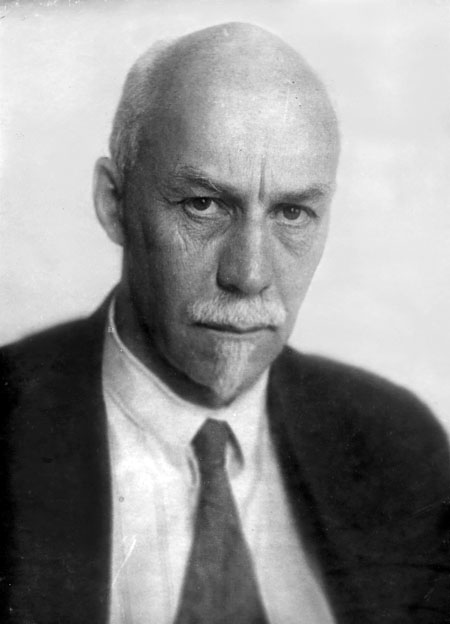
I. I. Schmalhausen
Since Schmalhausen's laboratory was established it was working in three directions: studies of determination and differentiation of body parts (B. I. Balinsky and N. I. Dragomirov); identification of morphogenic factors and role of proportionate and disproportionate growth in determitation of definitive form (I. I. Schmalhausen, N. P. Bordzilowskaja, K. I. Syngajewskaja,V. V. Brunst) and genetics of the growth factors in animals (G. I. Shpet, I. I. Nazarenko, P. O. Sitko, I. M. Krayovyi). 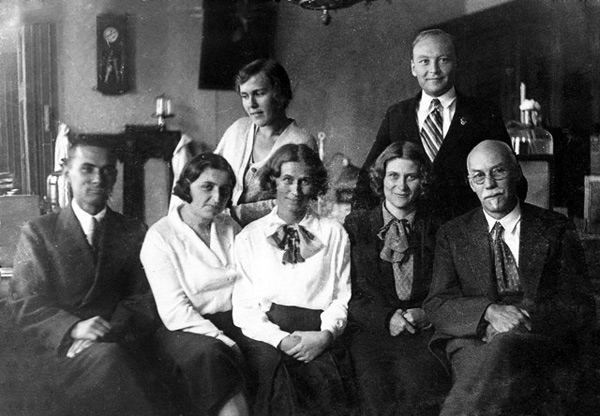
The Department of Experimental
Morphology (1935)
First two groups of scientists worked in 1930-s at the Department of Experimental Morphology. In 1934, the genetics group was transformed into the separate Department of General Biology. I. Y. Agol became the first head of this Department. However in 1936 he was arrested by false accusation, becoming a victim of Stalinist repression and was executed. Later (in 1937) this subdivision, which was renamed as Department of Genetics, was headed by S. M. Gershenson. Under the guidance of S. M. Gershenson this Department became one of the main centers of genetic studies in the Soviet Union. Studying the development of limb and eye Balinsky and Dragomirov demonstrated that the inductors act in non-specific manner, and showed that the nature of the structures, formed as a result of embryonic induction, is primarily determined by the nature of reactive tissue. 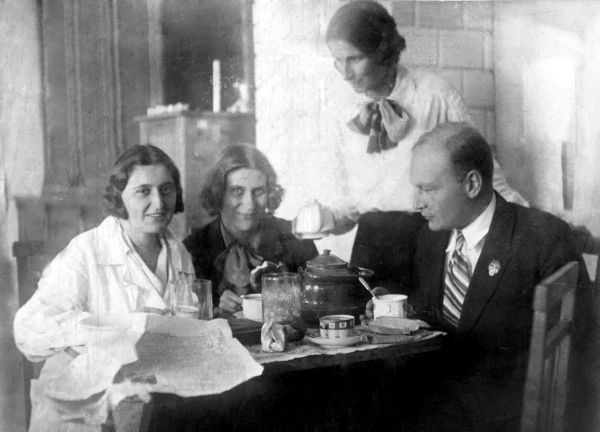
The Department of Experimental
Morphology (1935)
Schmalhausen and his colleagues conducted diverse studies of the growth processes of various organisms, and they identified a particular independency of the parts of organism during growth and inverse relationships between growth and differentiation. In these studies they widely utilized experimental approaches and mathematical methods and models. The phenomenon of heteronomous growth was discovered and studied at the same time by Schmalhausen and Huxley. Schmalhausen figured out that the changes in proportions between the organism parts during growth result from rebuilding of the organism in development, which occurs due to numerous interactions between organs and structures. He also pointed to the evolutionary significance of these processes. He demonstrated that in morphological evolution the most significant changes are those that alter the interrelations between organs (disproportionate increase of some of them and reduction of others). Thus, morphological evolution mainly occurs through the changes in the organ growth processes. According to Schmalhausen, integration of the parts of organism with each other, formation of the organism as a whole, development of morphogenetic mechanisms that provide the stability of development are among the main results of natural selection. Apart from scientific research, teaching the evolution theory and work on the textbook on comparative anatomy of vertebrates, which became a desk book for several generations of biologists, also contributed to the development of this concept. For the first time, Schmalhausen’s approaches to understanding of evolution were outlined in the review article published in 1937. Later, in several research papers and monographs, he provided the detailed descriptions of the factors, trends and regularities of evolution. The way Schmalhausen and his colleagues approached the evolutional studies can be considered as the first attempt to commence the researches in evolutionary developmental biology (informally, evo-devo), the field that became widespread in recent decades. In 1930s Schmalhausen became the recognized leader of Soviet evolutionary morphologists and embryologists and coordinated the studies in these fields in Moscow and Kiev. In 1936 he headed Institute of Evolutionary Morphology of the Academy of Sciences of the USSR in Moscow and then the Department of Darwinism of the Moscow University in 1939. At the same time he also continued heading Kiev Institute of Zoology (till 1941). Since late 1930s he permanently lived in Moscow but kept working for the Institute of Zoology. He was keeping close contacts with Kiev colleagues, especially with the research team of the Department of Experimental Morphology that had been established by him. During 1930s the Department of Comparative Morphology (headed by N. N. Voskoboinikov) was involved in morphofunctional and evolutionary studies of fish visceral apparatus. In his studies of the development of selachid branchial apparatus, Voskoboinikov demonstrated that branchial arches are formed from mesenchyma of visceral leaf of mesoderm lateral plate. He suggested that phylogenetic complication in branchial apparatus is connected with evolution of alimentary and respiratory functions of the head gut. 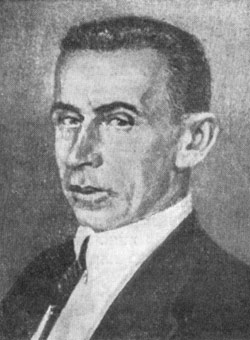
N. N. Voskoboinikov
During the World War II morphological departments of the Institute were virtually demolished. Some scientists did not survive the occupation. Voskoboinikov died during evacuation in Kzyl-Orda. Balinsky emigrated to Western Europe and then to South Africa where he successfully continued his embryological and zoological studies at the University of the Witwatersrand, Johannesburg. Nazis plundered the Institute of Zoology: collections, library books, and even laboratory equipment was taken to Germany by the occupants. Soon after the War the Department of Developmental Biology under the guidance of B. G. Novikov continued the work of the Department of Experimental Morphology. The research at this department was focused on ontogeny of breed characters in birds, particularly on the effect of daylight conditions on organism development. In 1944 – 1950, D. K. Tretyakov (Director of the Institute in 1944-1948) conducted comparative ichthyomorphological studies. Studying the skeletal, blood, nervous and seismosensory systems of cyclostomates, bony fishes and mammals, he disproved the allegation that evolutionary reorganizations do not occur in tissues, but exclusively in organisms and organs. The purpose of Tretyakov's research was to revise the concepts of the origin and evolution of vertebrates. 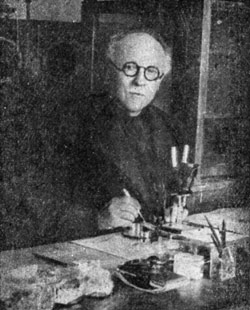
D. K. Tretyakov
After the World War II biological studies slowed down due to increased totalitarianism pressure. Lysenkoism was the most serious manifestation of this pressure. Nevertheless, scientists tried to fight against it in the early postwar years. Particularly Schmalhausen was one of those who initiated the attempts to resurrect science by organizing anti-Lysenkoism actions in Moscow. However in totalitarian society these attempts had no chance for success. In 1948 all the studies in genetics and related sciences were banned, teaching these sciences was stopped, and thousands of biologists were fired from their jobs. Particularly in Kiev, the Department of Genetics of the Institute of Zoology was closed, and studies related to the integrating effect of natural selection were stopped. Schmalhausen was fired and never returned to work in Kiev. Tretyakov was dismissed the Director of the Institute and Head of Biological Sciences Section of the Academy of Sciences. Some of the scientists from the Department of Genetics were either fired or forced to change the field of study. Studies in the genetics and evolution were almost completely stopped and it took decades to start them again. These events can be considered being a prehistory of the Department of Comparative Morphology, which was established in 1950 by V. G. Kasyanenko (the Director of the Institute in 1950-1963), and renamed into the Department of Evolutionary Morphology in 1960 (1984-2016 – the Department of Evolutionary Morphology of Vertebrates).
N. P. Bordzilowskaja was the only extant collaborator of the Schmalhausen’s laboratory in the new department; she was a connecting link, the “joint of times”, who kept Schmalhausen’s style and traditions regardless all these transformations of the Department. Nadezhda Petrovna was highly skilled in many foreign languages and till the end of her life she often helped post-graduate students with translating research papers. She passed away in 1996. Many of today’s professors and academicians recall her with gratitude as an intelligent, sympathetic and friendly person. 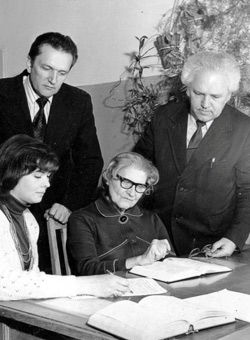
N. P. Bordzilowskaja with
the colleagues The direction of research introduced in the Department by Kasyanenko was the comparative anatomical and functional analysis of tetrapod locomotory apparatus. In 1950 – 1963, V. G. Kasyanenko, S. F. Manziy, P. M. Mazhuga, V. I. Tabin, V. M. Samosh, R. G. Radilovska conducted the fundamental comparative studies of joints in extremities of terrestrial vertebrates; P. M. Mazhuga, Yu. P. Antipchuk, O. R. Radzievsky, E. G. Chernyayev and others studied blood vessels in extremities and other organs. At that time, the first degrees of Candidate of Sciences (= PhD) and Doctor of Sciences were defended. The Department raised and became a school for Ukrainian comparative morphologists. In 1962, Kasyanenko started to lose eyesight and shortly had to stop his researches, but remained a scientific consultant of the Department. In 1963, S. F. Manziy became Head of the Department. In addition to comparative studies, the biomechanical studies were initiated, and bionic direction was declared, but soon discontinued because of enormous funding required. However, other new projects were well funded, and new, mainly young collaborators (engineers, post-graduate students) were involved. The staff reached maximum number; it included almost 30 employees at that time.
In 1965, G. B. Agarkov started his researches on nervous system in the Department. His post-graduate students studied innervation of joints (M. M. Ilyenko, 1965), innervation of extremities muscles (M. F. Kovtun, 1966), and cranial nerves (B. G. Khomenko, 1969).
K. P. Melnyk and V. A. Klykova analyzed the skeleton of extremities, S. F. Manziy, O. G. Berezkin, V. I. Klykov and others studied the joints; muscles of extremities and trunk were studied by S. F. Manziy, V. S. Kotok, V. F. Moroz and M. F. Kovtun; the synovial fluid in various mammals was sudied by A. N. Shchegolkov and O. G. Berezkin. As the result, the biological substitute of synovium for medical treatment of osteoarthroses was created. Electromyography, podography and mechanography of joints were used for the first time. The set of instruments used for these studies was designed at the Department by V. P. Tulyupa, V. S. Kotok and V. F. Moroz. Concurrently blood vessels (L. P. Osinsky) and spine (O. Ya. Pylypchuk) were studied. At that time two departments were established based on the Department of Evolutionary Morphology, namely the Department of Cytology and Histogenesis (was the separate division of the Institute in 1963-2016; heads: P. M. Mazhuga, N. V. Rodionova) and the Department of Functional Morphology of Aquatic Animals (was the separate division of the Institute in 1969-1991; heads: G. B. Agarkov, A. P. Manger).
In early 1970s, M. F. Kovtun initiated ecomorphological studies. Morphological characters were compared with biological features of the studied animals, particularly with their locomotion. Primarily the bats were studied. The hypotheses of bat origin and evolution were proposed. A lack of homology between the bat patagium and the patagium of gliding mammals was found; monophyly of bats was supported.
In 1984, M. F. Kovtun became Head of the Department. Functional and ecomorphological studies continued, and embryological studies were started. In 1984, the Department organized the All-Union Conference on Biomechanics, and in 1985 — the All-Union Conference on Bat Studies. The researchers of the Department studied functional morphology and ecomorphology of bats (M. F. Kovtun, I. M. Kovalyova, R. Y. Lykhotop, N. F. Zhukova, S. Y. Ledenev, Ya. A. Omelkovets, I. I. Dzeverin), gallinaceous birds (V. F. Sych, I. A. Bogdanovich) and flycatchers (O. M. Peklo). At the same time, functional-morphological and biomechanical studies of ungulates and some other animals were continued (O. G. Berezkin, K. P. Melnik, V. I. Klykov, V. A. Klykova, V. F. Moroz, V. S. Kotok, L. P. Osinsky). The concept of the origin of bats was being developed (M. F. Kovtun, I. M. Kovalyova, R. Y. Lykhotop, N. F. Zhukova, S. Y. Ledenev). Some new concepts concerning the origin of land locomotion apparatus of birds (I. A. Bogdanovich) and the origin of birds (I. A. Bogdanovich in coauthorship with E. N. Kurochkin from Paleontological Institute, Russian Academy of Sciences). Multivariate statistical techniques were applied in the studies of bat variation and evolution (I. I. Dzeverin). The researches of the Department studied the embryogeny of skull and extremities skeleton in bats (M. F. Kovtun, R. Y. Lykhotop, S. Y. Ledenev), and later in corvid birds (M. F. Kovtun, Y. V. Shatkovsky, O. V. Shatkovska). 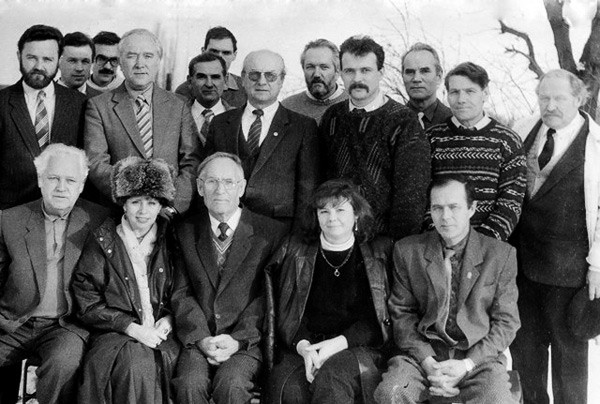
Researchers from the Department
of Evolutionary Morphology of Vertebrates and their colleagues
(December 1993)
Gradually, comparative anatomical, ecomorphological and comparative embryological studies covered most vertebrate taxa and systems of organs, including digestive (N. F. Zhukova), respiratory (I. M. Kovalyova), locomotor (I. A. Bogdanovich, I. M. Kovalyova, S. Y. Ledenev), cardiovascular (L. P. Osinsky), reproductive and excretory (O. V. Nechayeva, S. O. Ghilevych) systems, skin (O. P. Koval), termoregulatory organs (I. P. Zakrevskaya). The researches of the Department studied the skull embryogenesis in some reptiles (O. M. Yaryhin, H. V. Sheverdyukova). In the framework of cooperation between the Institute of Zoology and Lesya Ukrainka Eastern European National University, a study on the embryology of Osteichthyes was started (Y. V. Stepanyuk and M. F. Kovtun). 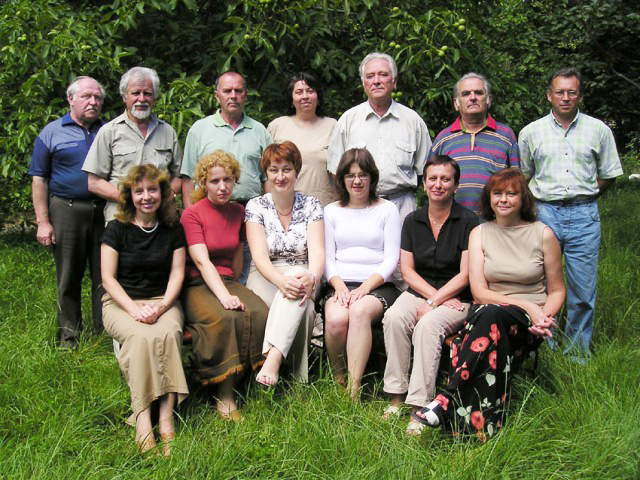
Researchers from the Department
of Evolutionary Morphology of Vertebrates (June 2005)
In 2013, I. I. Dzeverin became Head of the Department. Some new areas became the principal for the work of the Department, namely the studies in morphometrics and application of statistical methods to comparative morphological and ecological data (I. I. Dzeverin, P. E. Gol'din, M. A. Ghazali, A. V. Romaniuk), diverse researches of the biology of marine mammals (P. E. Gol'din, K. O. Vishnyakova, O. V. Gladilina, O. V. Savenko), and paleontological studies (L. V. Popova, P. E. Gol'din, S. V. Davydenko). Meanwhile, traditional research in comparative morphology (I. A. Bogdanovich, I. M. Kovalyova, P. E. Gol'din, O. V. Shatkovska) and embryology (M. F. Kovtun, Y. V. Stepanyuk, O. M. Yaryhin, H. V. Sheverdyukova) is still continuing. In 2016 the former Department of Cytology and Histogenesis was included to the Department of Evolutionary Morphology. |
|||||||||||||||||||||||
I. I. Schmalhausen Institute of Zoology, 2004-2022 |

